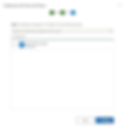Microsoft teams has seen a huge surge in popularity this year. With more people working from home than ever before, Microsoft teams has become a vital application in allowing users to communicate effectively with customers and colleagues.
But Teams is much more than just a chat and video conferencing app, with integrations to many popular 3rd party applications as well as Microsoft’s own first party applications, it’s quickly becoming the tool of choice for getting work done and collaborating effectively.
Let's take a look at how the Dynamics 365 integration with teams works and how to get the most out of it.
As always we need to start with some configuration in order to set up our integration. Start by heading over to the power platform admin centre and selecting your environment of choice. Click Settings -> Integration -> Teams Integration Settings.
On the settings page, open up the System Settings and under the general tab find the Microsoft Teams Integration section. First enable Basic integration followed by the enhanced integration. You’ll be presented with some additional dialogs and will need to sign in when enabling the enhanced teams integrations, but after you have followed the on screen instructions the integration will be enabled.

The basic integration will give you most of the functionality that you need, with the enhanced integration giving you the additional ability to connect records or views to a teams channel while you are working inside a Dynamics 365 app.
So with the configuration out of the way, let’s go take a look at how the integration works.
We’ll start by taking a look at the “basic” integration experience. For this we need to head over to Microsoft teams and open or create a team channel that we want to connect to a record in Dynamics.

I’m going to create a team called Projects in which I’ll create a channel to link to an account record, let’s call this first one Adventure Works.

With our channel selected, let’s click the plus button to add a new tab and select Dynamics 365.

Next we need to select if we want to add an entity or a view.

Let’s add an entity by searching for the record we want and then click save once we’ve found and selected it.
If we have the enhanced integration enabled and we are the owner of the team we will also see the option to add other members to the team at this point.
Once we’ve clicked save, you’ll see a notification telling you that the connection has been successful and then the record will load in to the newly added tab.

From within this tab you can interact with the record directly, you can also open a side-by-side conversation pane and chat with your team members in the channel.

The teams integration also extends to document management. If I navigate to the files tab in the teams channel I can work with the documents here as is usual in teams, except now this document repository has been automatically linked to my record in Dynamics 365. So if I am working in my Dynamics 365 app and I navigate to the document section of the record, I can see the documents that I have been working on in my teams channel.

As we saw earlier you can also connect a view from Dynamics 365 to a teams channel. Click the add button at the top of the channel and select Dynamics 365 again, but this time let’s change the selection to View Selection. We then need to select the entity we want to see the views for before we are presented with a list of the available views. Now I can select the view that I want to see and click save.

If I have multiple environments or access to multiple model driven apps I can select which environment and app to use in team and just like the record, the view is loaded into the tab and I can interact with it as if I were working in the model driven app directly.

So let’s now take a look at the collaboration experience from a Dynamics 365 app perspective.
Let’s head into the sales hub and take a look at a record that we want to connect to a teams channel. You can see that a new collaborate button has been added to the command bar.

Let’s click it and work through the dialog that opens. After clicking get started we can choose a team that we want to connect this record to, or if one doesn’t exist we can choose to create a new team at this point. I’m going to select our existing team and click next.

On the next screen we need to select the channel we want to link the record to, again we can select an existing channel or create a new channel. I’m going to create a new channel for this record.

In the last step if you are the owner of the selected team you can now add any additional team members to your team before clicking Finish to finalise the connection.

Now this record is connected to our new teams channel with the same functionality as described before. From within Dynamics if I now click on the Collaborate button I can select my team and Microsoft Teams will open the connected channel so that I can collaborate with my team members, chat and work on the documents linked to my channel and my record in Dynamics 365.